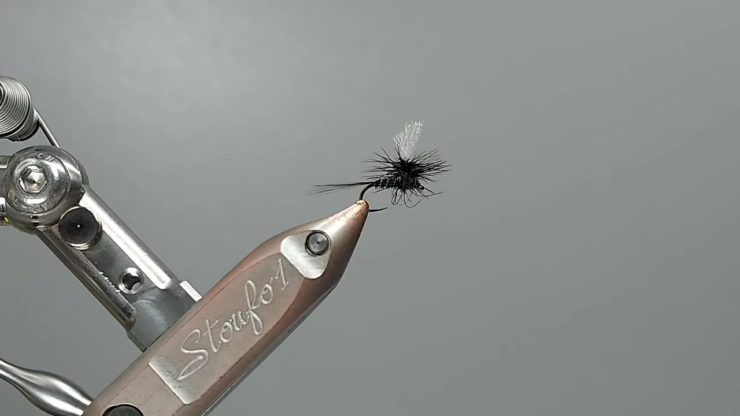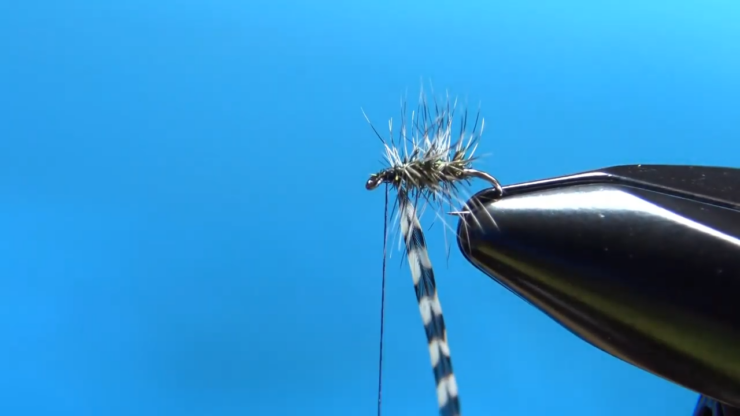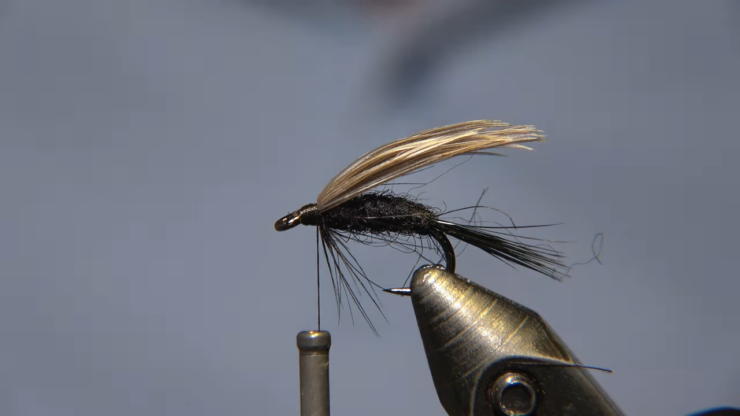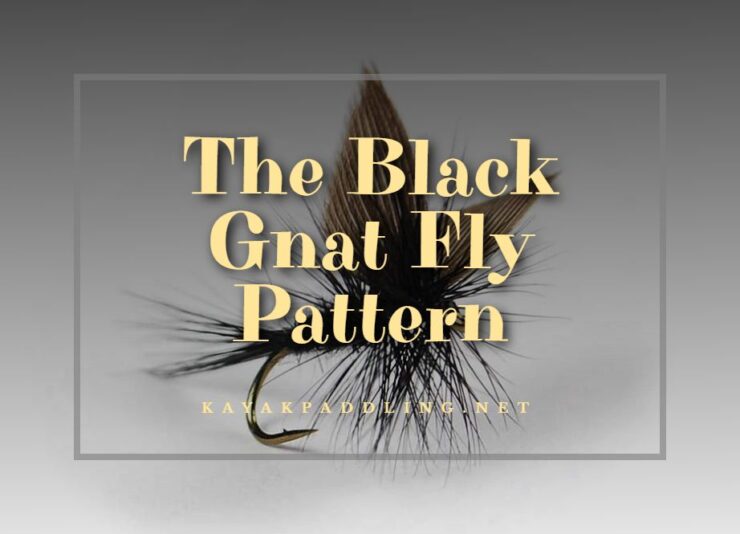We’re going really old school on this one.
The Black Gnat dates back, in one form or another, to Dame Juliana Berners fishing guide, first published in 1496. Of course, it’s changed a fair bit over half a millennium, but it’s fair to call this one a traditional pattern.
This is one of my go-to patterns for Arctic Grayling, especially on smaller streams.
I kind of suspect that they’re eating the black flies that are so overly abundant in the far North, but whatever it is those fish seem to really like anything black and buggy looking, and the Black Gnat fits that bill perfectly.
Table of Contents
ToggleHow Does The Black Gnat Look Like?

The Black Gnat is a traditional style, duck quill winged dry fly.
It’s typically tied with black tails, though it can also be tied with red tails. Most times, I’ve seen it tied on small to very small hooks
Interestingly, there is record of the Black Gnat being tied both as a wet and dry fly, though the dry is seen far more in modern times.
What Does The Black Gnat Fly Pattern Imitate?
The Black Gnat is, well, a black gnat.
There are a lot of insects that fall under the category of a black gnat, however. Traditionally, these are either Bibio, (March Fly) or Emphidae species, though I have a suspicion that the Grayling that take my Black Gnats are picking up black flies. I can’t prove that but given the vast numbers of black flies that follow anglers in the North, I can’t imagine how they’re not Grayling food.
Truthfully, this fly imitates any insect that’s relatively small and dark.
Like most other patterns, don’t let the name hold you back. If anglers can make an Elk Hair Caddis imitate a stonefly, you can make the Black Gnat imitate anything little and black.
History Of The Black Gnat

The Black Gnat, as noted, goes back a long way. And, while the name and broad idea has remained the same, the fly itself has gone through a few iterations.
It’s first mentioned by the originator of fly-fishing writing Dame Juliana Berners, in her 1496 treatise on fishing. Charles Cotton make note of it in his 1676 addition to Walton’s “The Compleat Angler”, where he noted it should be tied with…
The dubbing either of the fur of a black water-Dog, or the down of a young black water-Coot, the wings of the Male of a Mallard as white as may be, the body as little as you can possibly make it, and the wings as long as his body.
After that, virtually very notable tier or documentarian of fly fishing made note of one Black Gnat pattern or another.
In 1968, Donald Overfield, in his column “Trout Flies of Yesteryear” identifies five historical variations from Cotton’s through to the modern creation, which he credits to Commander C.F. Walker, from 1968.
When and How to Fish The Black Gnat
The Black gnat’s a great fly whenever small dark or black insects are hovering over the water.
Clouds of gnats or other small flies can often be seen in swarms, especially along reed beds and lake margins and it’s inevitable that some of these will end up as trout food. In rivers and streams, it’s best suited to slower water or backwater eddies.
Fish it static on the surface or with a varied retrieve and try it when there’s not a lot of other surface action. If there’s another hatch on, fish are likely to ignore these small meals.
I think this is also a bit of a geographically restricted pattern. While trout fishermen across North America are fishing mayfly and caddis and stonefly patterns, I’ve found the Black Gnat to be in its element in the North, where hordes of biting black flies torment anglers all summer. I use it far less when I’m further south, in more inviting company.
Still, anywhere there’s slack water, there’s a reasonable chance for those swarms of small flies to appear. And, if they appear, there’s a chance that fish will eat them. It’s just a matter of whether other, better food sources are available.
Variations Of This Fly Pattern

While there’s not a ton of variation to the Black Gnat dry fly, except for tail coloring, a parachute version, to improve visibility in the water, does exist.
It is also notable that a wet fly version of the Black Gnat exists. Tied considerably larger than the tiny dry version, it creates a moderately successful streamer pattern.
Conclusion
The Black Gnat’s not an especially versatile pattern. It imitates one type of insect (I’d argue that small, black, flies can be grouped together from a fish’s perspective, even if there are thousands of species) but it imitates that type very well.
And, while it doesn’t leave the fly box as often as an Adams or a Humpy, in the right circumstances, I’ve had Black Gnats be absolute dynamite.
Check out some other picks from Amazon also:
Adelaide Gentry, a seasoned kayaking enthusiast and expert, is the driving force behind KayakPaddling.net. With over a decade of experience navigating the world’s most challenging waterways, Adelaide combines her passion for adventure with a deep knowledge of kayaking to provide insightful and practical guidance for paddlers of all levels.
Related Posts:
- Heavy Duty Fishing: 11 Best Rods And Reels For Big Fish 2024
- 12 Best Fishing Lures Ever 2024 - Baits That…
- 16 Best Kayak For Beginners 2024 - Kayaking Adventure Gear
- 12 Best Bass Boats Under $20,000 2024 - Catch Your Prize
- 11 Best Kayak-Sized Coolers For Anglers 2024 - Keep…
- 12 Best Truck Bed Hitch Extenders for Kayak 2024 -…












